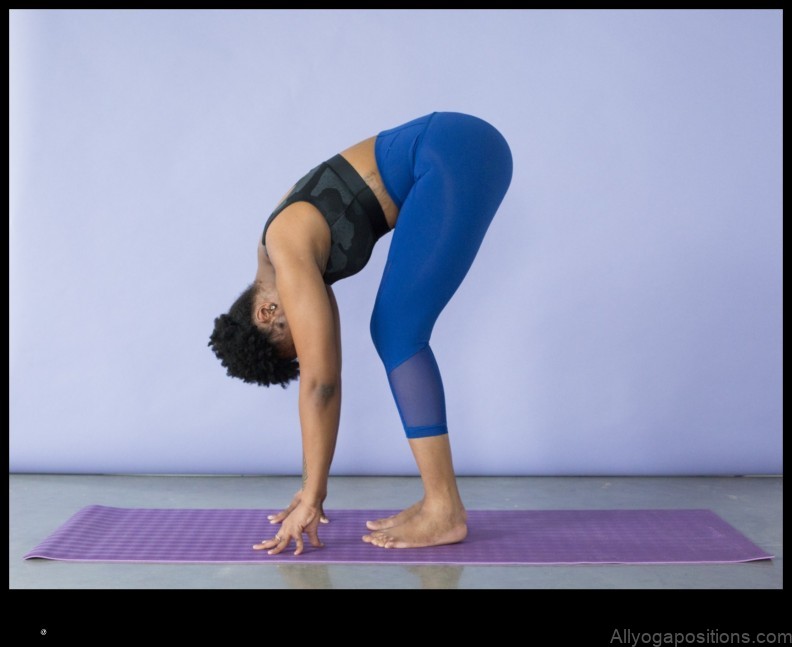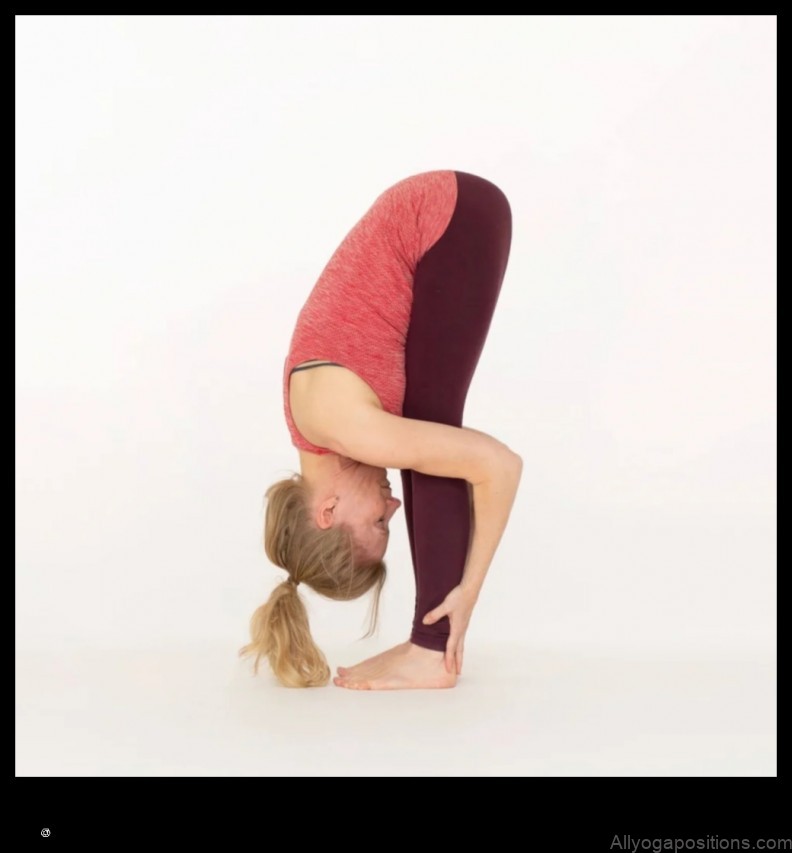
Standing Forward Bend Yoga Pose
- Introduction
- Benefits of Standing Forward Bend
- How to do Standing Forward Bend
- Common Mistakes to Avoid
- Modifications for Beginners
- Advanced Variations of Standing Forward Bend
- Benefits of Practicing Standing Forward Bend Daily
- How to Make Standing Forward Bend Part of Your Daily Routine
- FAQs About Standing Forward Bend
- Conclusion
| Feature | Answer |
|---|---|
| Forward bend | A yoga pose that involves bending forward from the waist, with the arms extended overhead. |
| Standing forward bend | A variation of the forward bend that is done while standing. |
| Yoga | A mind-body practice that combines physical postures, breathing exercises, and meditation. |
| Yoga pose | A specific posture that is performed in yoga. |
| Uttanasana | The Sanskrit name for the standing forward bend pose. |
II. Benefits of Standing Forward Bend
Standing Forward Bend is a yoga pose that offers a number of benefits, including:
- Stretches the hamstrings, calves, and back
- Relieves tension in the shoulders and neck
- Improves circulation
- Reduces stress
- Promotes relaxation
- Increases flexibility
- Improves balance
- Strengthens the core

How to do Standing Forward Bend
Standing with your feet hip-width apart, inhale and reach your arms up overhead. Exhale and fold forward from your hips, keeping your knees soft and your spine long. Bring your hands to the ground in front of your feet, or rest them on your shins or ankles. If you can reach, grab your big toes with your index fingers and thumbs and gently pull your torso closer to your legs.
Stay in this position for 30 seconds to 1 minute, or for as long as is comfortable. Inhale and lift your torso back up to standing, reaching your arms overhead.
IV. Common Mistakes to Avoid
When doing Standing Forward Bend, there are a few common mistakes to avoid. These include:
- Bending from the waist instead of the hips
- Rounding your back
- Pressing your head down too far
- Holding the pose for too long
To avoid these mistakes, make sure to:
- Bend from your hips, keeping your back straight
- Allow your head to hang down naturally
- Release the pose as soon as you feel any discomfort

V. Modifications for Beginners
If you are new to yoga or have any injuries, there are a few modifications you can make to the Standing Forward Bend to make it more accessible.
- Start with your feet hip-width apart and your knees slightly bent.
- Reach your arms up overhead and then fold forward at your hips, keeping your knees bent.
- Allow your head to hang down and rest your hands on your shins or ankles.
- Hold the pose for a few breaths, then slowly come back up to standing.
If you find that your lower back is rounding or your knees are hurting, you can try placing a rolled-up towel under your knees. You can also bend your knees more deeply or come to a seated position with your legs extended in front of you.
The Standing Forward Bend is a great pose for beginners because it is gentle on the body and can be modified to suit your individual needs. It is a good way to stretch your hamstrings, calves, and back, and it can also help to improve your flexibility and balance.
VI. Advanced Variations of Standing Forward Bend
In addition to the basic Standing Forward Bend, there are a number of advanced variations that you can try. These variations can help you to deepen your stretch and improve your flexibility.
-
Cobra Pose (Bhujangasana): From Standing Forward Bend, come onto your hands and knees with your knees hip-width apart and your hands shoulder-width apart. Inhale and arch your back, lifting your head and chest up. Exhale and lower back down to the ground.
-
Downward-Facing Dog (Adho Mukha Svanasana): From Standing Forward Bend, step your feet back so that your legs are straight and your arms are extended in front of you. Inhale and lift your head and chest up, keeping your legs straight. Exhale and lower your head and chest to the ground.
-
Plow Pose (Halasana): From Standing Forward Bend, lie down on your back with your legs extended in front of you. Inhale and raise your legs up over your head, keeping your knees bent. Exhale and straighten your legs, allowing your toes to touch the ground behind you.
VII. Benefits of Practicing Standing Forward Bend Daily
Standing Forward Bend is a simple yet powerful yoga pose that offers a wide range of benefits. When practiced regularly, it can help to:
- Improve flexibility in the spine, hamstrings, and calves
- Reduce stress and anxiety
- Increase circulation
- Relieve tension in the neck and shoulders
- Improve digestion
- Boost energy levels
- Reduce lower back pain
- Improve posture
If you are new to yoga, it is important to start slowly and gradually increase the duration of your hold as you become more comfortable with the pose. If you have any underlying health conditions, be sure to talk to your doctor before starting a yoga practice.
How to Make Standing Forward Bend Part of Your Daily Routine
Standing Forward Bend is a simple yet effective yoga pose that can be done at home or in the studio. It is a great way to stretch your hamstrings, calves, and back, and it can also help to improve your posture and relieve stress. To make Standing Forward Bend part of your daily routine, you can follow these steps:
- Start by standing with your feet shoulder-width apart and your arms at your sides.
- Inhale and raise your arms overhead, then exhale and bend forward from your hips, keeping your knees slightly bent.
- Reach your arms forward as far as you can and allow your head to hang down.
- Hold the pose for 5-10 breaths, then slowly come back up to standing.
- Repeat the pose 2-3 times.
You can also add variations to Standing Forward Bend to make it more challenging or to target specific areas of your body. For example, you can try:
- Bend your knees deeper and reach your hands to your toes or ankles.
- Cross your arms behind your back and reach for your opposite elbows.
- Hold a yoga block or strap behind your back and reach for it with your hands.
Standing Forward Bend is a versatile pose that can be enjoyed by people of all fitness levels. By making it part of your daily routine, you can reap the many benefits of this simple yet effective yoga pose.
FAQs About Standing Forward Bend
1. What are the benefits of practicing Standing Forward Bend daily?
2. How can I make Standing Forward Bend part of my daily routine?
3. What are some common mistakes to avoid when doing Standing Forward Bend?
4. What are some modifications for beginners who are unable to do Standing Forward Bend with their feet flat on the ground?
5. What are some advanced variations of Standing Forward Bend?
6. What precautions should I take when practicing Standing Forward Bend?
7. Is Standing Forward Bend safe for pregnant women?
8. What are thecontraindications of Standing Forward Bend?
9. What are some other yoga poses that are similar to Standing Forward Bend?
10. Where can I find more information about Standing Forward Bend?
Standing Forward Bend Yoga Pose
forward bend, standing forward bend, yoga, yoga pose, uttanasana
People searching for “Standing Forward Bend yoga pose” are likely looking for information on how to do the pose, what benefits it offers, and what precautions to take. They may also be looking for videos or tutorials that demonstrate the pose.
FAQs About Standing Forward Bend
Q: What are the benefits of practicing Standing Forward Bend daily?
A: Standing Forward Bend offers a number of benefits, including:
- Improved flexibility
- Reduced stress
- Increased circulation
- Strengthened core muscles
- Improved digestion
Q: What are some common mistakes to avoid when doing Standing Forward Bend?
A: Some common mistakes to avoid when doing Standing Forward Bend include:
- Rounding your back
- Overstretching your hamstrings
- Forcing your head and neck down
- Breathing shallowly
Q: What are some modifications for beginners who are unable to do a full Standing Forward Bend?
A: Some modifications for beginners who are unable to do a full Standing Forward Bend include:
- Stand with your feet shoulder-width apart and your knees slightly bent.
- Reach your arms up overhead and bend forward at your hips, keeping your back straight.
- Allow your head and neck to hang down loosely.
- Hold the pose for a few breaths, then slowly come back up to standing.
Table of Contents
